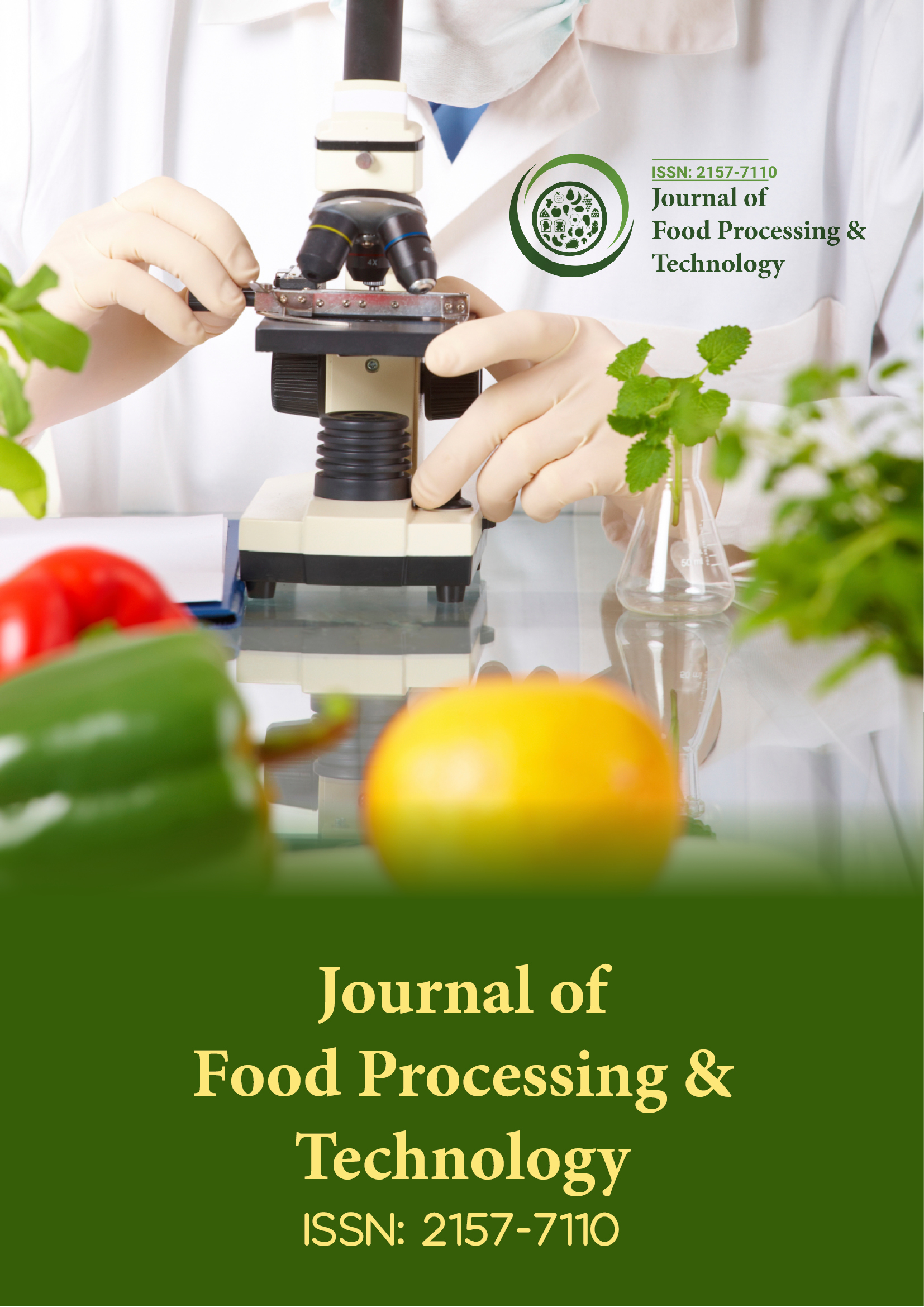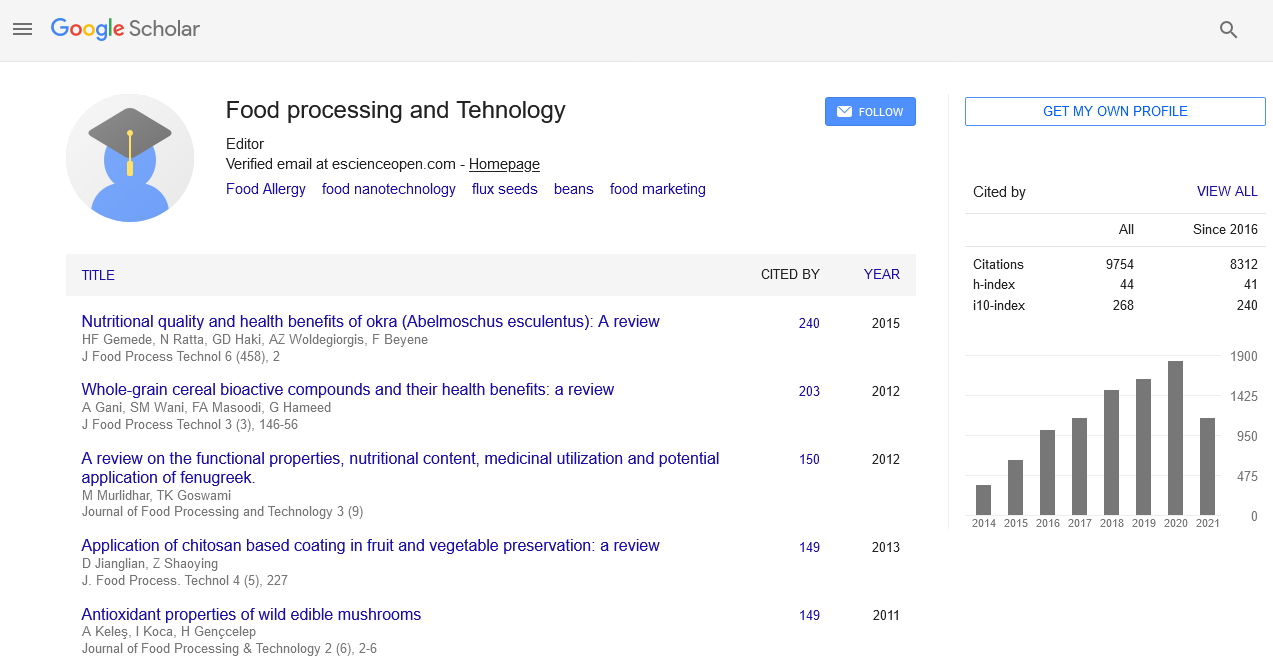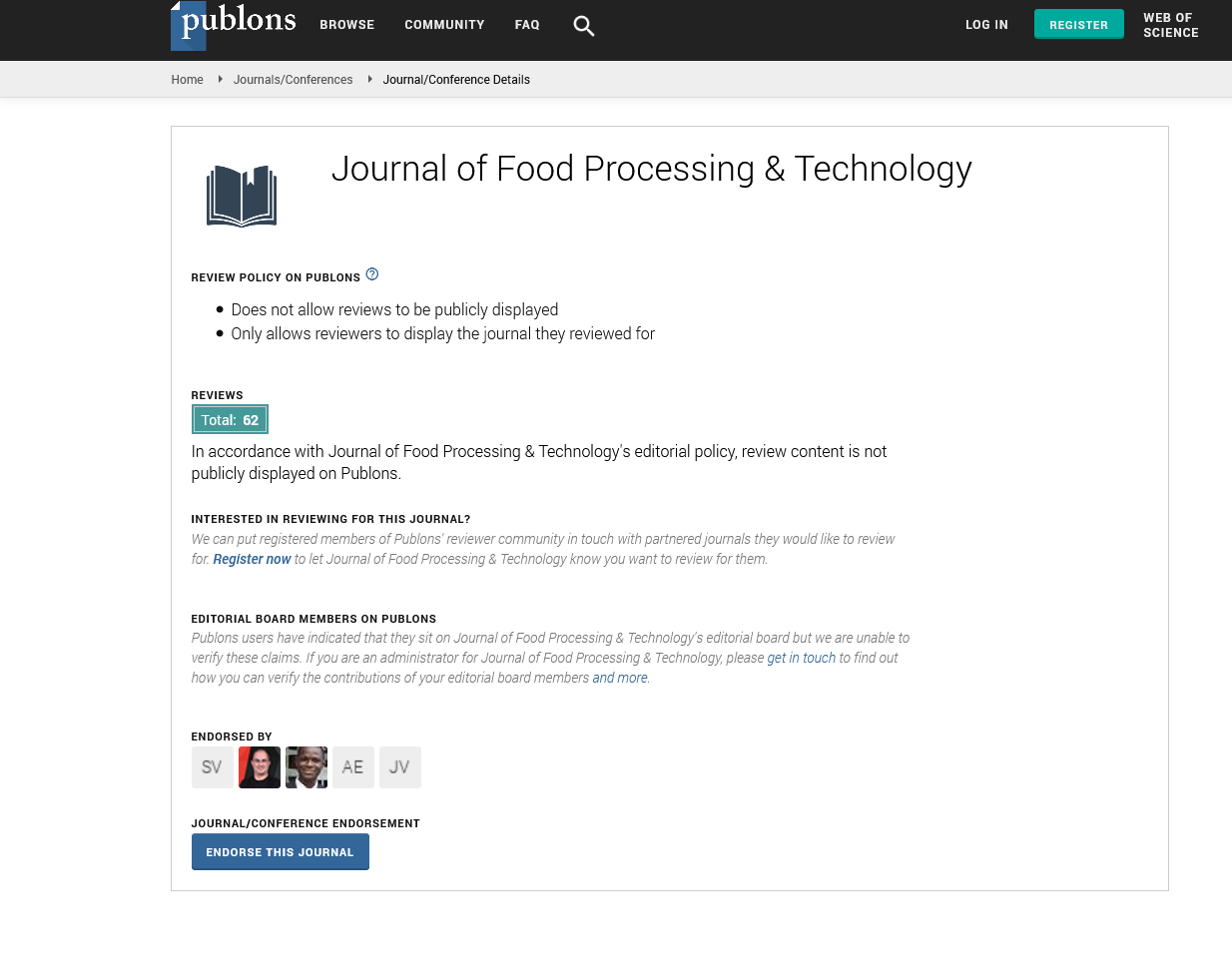Indexed In
- Genamics JournalSeek
- Academic Keys
- JournalTOCs
- China National Knowledge Infrastructure (CNKI)
- Access to Global Online Research in Agriculture (AGORA)
- Centre for Agriculture and Biosciences International (CABI)
- RefSeek
- Directory of Research Journal Indexing (DRJI)
- Hamdard University
- EBSCO A-Z
- OCLC- WorldCat
- Scholarsteer
- SWB online catalog
- Publons
- Euro Pub
- Google Scholar
Useful Links
Share This Page
Journal Flyer

Open Access Journals
- Agri and Aquaculture
- Biochemistry
- Bioinformatics & Systems Biology
- Business & Management
- Chemistry
- Clinical Sciences
- Engineering
- Food & Nutrition
- General Science
- Genetics & Molecular Biology
- Immunology & Microbiology
- Medical Sciences
- Neuroscience & Psychology
- Nursing & Health Care
- Pharmaceutical Sciences
Opinion Article - (2024) Volume 15, Issue 2
Non-Thermal Techniques Shaping the Future of Food Processing
Martinez Lastra*Received: 29-Mar-2024, Manuscript No. JFPT-24-25774; Editor assigned: 01-Apr-2024, Pre QC No. JFPT-24-25774 (PQ); Reviewed: 15-Apr-2024, QC No. JFPT-24-25774; Revised: 22-Apr-2024, Manuscript No. JFPT-24-25774 (R); Published: 29-Apr-2024, DOI: 10.35248/2157-7110.24.15.1101
Description
The ever-evolving landscape of food technology, search for enhancing food safety and quality while preserving its natural attributes has led to the exploration of non-thermal processing techniques. Among the various aspects of food quality, color holds a paramount position, as it significantly influences consumer perception and acceptance. Understanding the influence of non-thermal technologies on the color pigments of food materials is essential for ensuring both food safety and sensory appeal. In this updated review, we delve into the latest advancements and insights in this field.
Non-thermal technologies: Revolutionizing food processing
Non-thermal technologies encompass a range of innovative methods that aim to process food without subjecting it to excessive heat. Traditional thermal processing, while effective in eliminating pathogens and extending shelf life, often leads to undesirable alterations in food quality, including color degradation. Non-thermal techniques offer a potential alternative, preserving the sensory attributes and nutritional value of food while ensuring safety.
Impact on color pigments: Color pigments in food, such as chlorophylls, carotenoids, and anthocyanins, play a pivotal role not only in aesthetics but also in indicating freshness, ripeness, and nutritional content. The application of non-thermal technologies can modulate the stability and bioavailability of these pigments, thus influencing the visual appeal and health benefits of food products.
Pulsed Electric Field (PEF) processing: PEF processing involves the application of short, high-voltage electrical pulses to food materials, leading to microbial inactivation and enzymatic inactivation without significant heating. Recent studies have demonstrated that PEF treatment can enhance the extraction efficiency of color pigments from plant materials, resulting in intensified coloration and improved pigment stability.
High-Pressure Processing (HPP): HPP involves subjecting food products to high hydrostatic pressure, which disrupts cellular structures of microorganisms while preserving the native characteristics of the food matrix. Research indicates that HPP can effectively retain the color pigments in fruit and vegetable juices by minimizing enzymatic degradation and oxidative reactions, thereby maintaining vibrant colors and nutritional integrity.
Ultraviolet (UV) light treatment: UV light treatment is gaining traction as a non-thermal technology for food preservation and quality enhancement. UV-C irradiation, in particular, has been shown to inhibit microbial growth and extend shelf life while preserving the color attributes of food products. Furthermore, UV treatment can stimulate the accumulation of certain color pigments in plants, leading to enhanced coloration and antioxidant activity.
Emerging techniques: Beyond the established non-thermal technologies, emerging methods such as pulsed light, ultrasound, and cold plasma are being investigated for their potential to impact food color pigments. These techniques offer unique mechanisms for microbial control and food preservation while influencing the stability and bioavailability of color pigments in novel ways.
While non-thermal technologies hold the potential for enhancing food color pigments, several challenges must be addressed. These include optimizing processing parameters to maximize pigment retention, ensuring regulatory compliance, and addressing consumer perceptions regarding novel processing methods. Collaborative efforts among researchers, food producers, and regulatory agencies are essential to overcome these challenges and harness the full potential of non-thermal technologies in the food industry. The influence of non-thermal technologies on food color pigments is a rapidly evolving area of research with profound implications for food safety, quality, and consumer satisfaction. By understanding the mechanisms through which non-thermal processing techniques modulate color pigments, food scientists and industry stakeholders can develop innovative strategies to enhance the visual appeal, nutritional value, and shelf life of food products. As the quest for healthier and more sustainable food options continues, non-thermal technologies are poised to play a central role in shaping the future of food processing.
Citation: Lastra M (2024) Non-Thermal Techniques Shaping the Future of Food Processing. J Food Process Technol. 15:1101.
Copyright: © 2024 Lastra M. This is an open access article distributed under the terms of the Creative Commons Attribution License, which permits unrestricted use, distribution, and reproduction in any medium, provided the original author and source are credited.


